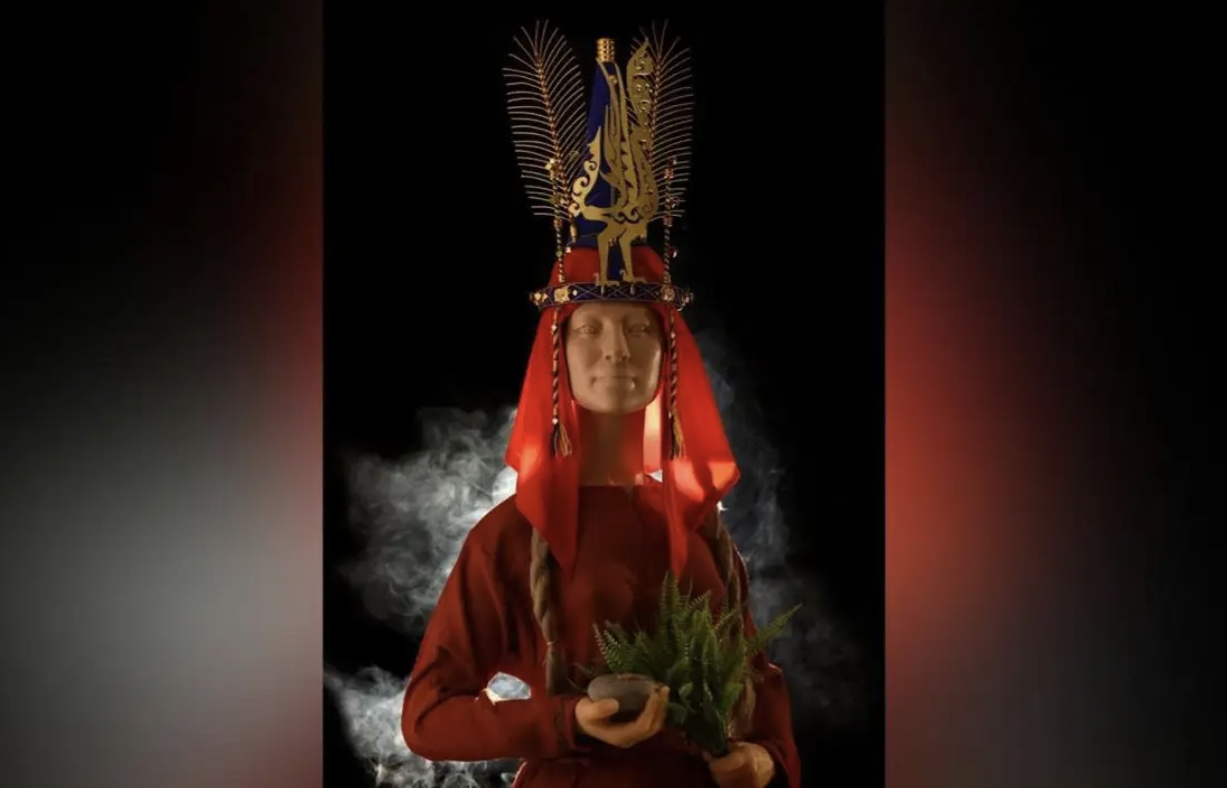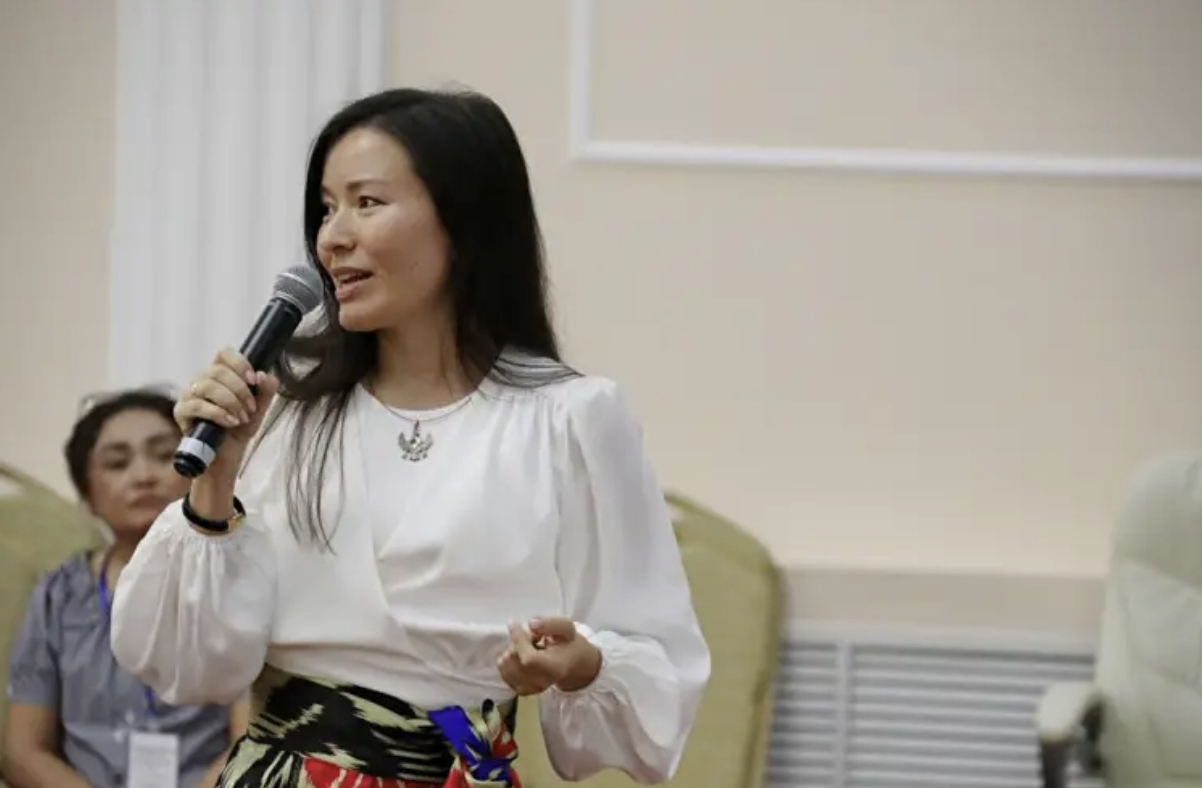ASTANA—The red dress of the Urzhar Priestess, a noblewoman from the fourth to third centuries BC, is evidence of the symbolism and significance attributed to the color red at that time.

The red dress of the Urzhar Priestess. Photo credit: Oleg Belyalov
The specialists of the Ostrov Krym scientific restoration laboratory discovered the tomb in 2013 in the Urzhar district of the East Kazakhstan Region. Based on her elaborate attire and ornate headdress, they reconstructed the image of a noblewoman believed to have held a prominent position in ancient society.
“There was nothing left of her clothes, except for a few tiny pieces of cloth, which at the time of discovery were a dirty brown color because they had been lying underground for a long time. Through research, it was determined that her clothing was red. We can state this with certainty,” said the designer and restorer of the laboratory, Elina Altynbekova, in an interview with Kaziform news agency.

The specialists of the Ostrov Krym scientific restoration laboratory discovered the tomb in 2013 in the Urzhar district of the East Kazakhstan Region. Photo credit: Altynbekov
The headdress was crafted from Chinese silk, while the woolen dress was made from the wool of local lambs. Both fabrics were dyed with marena to achieve their vibrant red color, which is symbolic in many settings of that society.
“The red color is believed to bring life, energy, and warmth. That is why it had a special meaning for people of that time. We assume that, most likely, the red color was reserved for representatives of the elite or those in sacred professions, such as priestesses. Dyeing clothes in red was a very labor-intensive and costly process, so everyone could not afford it,” said Altynbekova.
The Urzhar findings hold the key to a large proportion of gold in female Saka burials. This hints that women had a high position in the Iron Age society of Kazakhstan, possibly as spiritual leaders.
The most valuable artifact was the ancient woman’s headdress.
“The woman herself was in the sarcophagus. Much work has been done to restore and reconstruct the find. The best-preserved piece of costume is the headdress. In addition, scraps of red fabric and various ornaments were preserved, including the central ornament consisting of fragments of yellow metal foil ornament, then small squares of foil and fragments of thin wire,” said Altynbekova.

Photo credit: Sergey Alekseenok
According to Altynbekova, connecting with the ancient past could offer insights into the symbolism we encounter, highlighting the continuity and shared elements of cultures across different eras.
“Though much time has passed, we still appear to be the bearers of that era, its successors. Back then, people lived in nature and were inspired and oriented by it. All the symbols that we used to see reflect this very well. For example, symbols like the sun, solar [astral] signs. Color was of great importance – the same red and yellow. Saffron was used to obtain yellow color – also not a simple process,” said Altynbekova.
“Animal symbolism was also applicable. For example, the image of argali is still used in modern ornamentation. As an example of bird ornamentation, we can mention samruk [a bird from Kazakh legend]. We can say that everything is transformed, changed, and modernized, but the basis remains the same – it is what we see around us. This approach was used by people in ancient times and by modern people nowadays,” she added.


